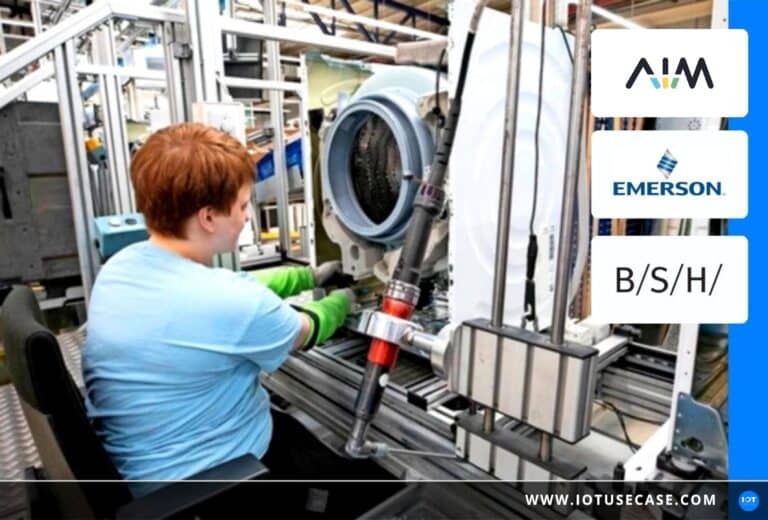In pneumatic systems, leakage can cause malfunctions, for example due to overloaded compressors. Continuous monitoring and detection of leakages by a machine learning system prevents malfunctions and reduces the energy consumption of the plant.
The challenge: Leakages in pneumatic systems lead to energy losses
The plants of the Bosch subsidiary BSH Hausgeräte GmbH manufacture fully automatically and therefore use pneumatic systems in addition to electric drives. According to statistics, about 20-30 percent of the total energy consumption goes to pneumatics. Leakage occurs over time due to wear. If the systems are not maintained for a longer period of time, up to 30 percent of the compressed air produced can escape via leaks.
In the event of major leaks, the compressor cannot supply enough air, which may result in performance losses. In any case, the power consumption is increased, so that energy losses occur and unplanned downtimes can occur.
Increasing energy consumption also leads to an unnecessary deepening of the carbon footprint – in the face of new legal rules for sustainability.
BSH has so far prevented disturbances and energy losses by regular inspection tours with special microphones for leak detection – at a relatively high cost. BSH therefore wanted system that would operate automatically, report leaks earlier and determine their exact location in the plant. This makes the deployment of maintenance technicians more precise and efficient, and also eliminates the need for inspection rounds.
The solution: Connect to the IIoT and monitor with AI to automatically detect leaks
The solution developer for industrial AI AIM together with the pneumatics specialist emerson Automation Solutions has developed a predictive maintenance solution for existing and new pneumatic systems in industrial plants. Especially in older production facilities, there is often only little data available, for example only the central flow rate and the control data. However, emerson also offers retrofit sensors and other equipment under the Aventics product brand that can be used to connect pneumatic cylinders and valves to the Industrial IoT (IIoT).
Predictive maintenance is based on the evaluation of machine data. The result of this allow a prediction to be made as to which points in a system are subject to greater wear and tear and where a malfunction will soon occur. The operator can now maintain the equipment or equip it with spare parts in a timely manner, as needed and based on precise scheduling. In the case of the BSH system, predictive maintenance detects leaks and uses data to determine the exact location of the cylinder.
However, sufficient machine data must be available for this. This is easier with electric and electronic systems than with pneumatic ones. This is because these only produce measured values at longer intervals, for example when valves are opened or closed. So the challenge for developing a solution is to achieve meaningful evaluation with relatively small amounts of data.
For this purpose, AIM has developed an AI-based method in collaboration with emerson that allows precise predictions even with small amounts of data through the interaction of domain knowledge, classical methods and machine learning models. It uses two different working modes: calibrate and monitor. In calibration mode, the AI system learns the “standard behavior” of the plant fully automatically on the basis of the measured values. After switching to monitoring mode, the AI system registers the measured values and detects deviations from the learned values and thus whether there are any leaks. Threshold values are taken into account depending on the size of the pneumatic cylinders. For example, 20 percent pressure losses are negligible for small cylinders, while the same value for large cylinders can already lead to significant energy losses.
The result: Fewer leaks and malfunctions as well as lower energy losses
Thanks to the permanent evaluation of all measuring points, the emerson solution detects a leak much earlier than regular inspections would allow. In addition, it becomes clear at which locations within a plant the leakages occur.
By taking threshold values into account, plant operators can also better assess the cost-effectiveness of maintenance. Repairing minor leaks is not necessary because there is little energy loss and the cost of repair would far exceed the cost savings.
Overall, the rapid repair of major leaks can also increase the service life of compressors and cylinders, for example, as they are now no longer so easily overloaded. Ultimately, this increases a company’s sustainability because less energy is consumed and existing equipment is used for longer.










